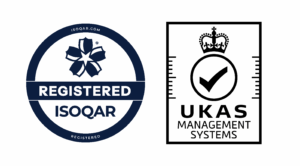Securing your place among the service elite
How to overcome the CX challenges of the next decade
Contact centres and those within the customer care industry have been discussing the advantages of integrated communication channels for decades.
Vendors within the industry use buzzwords like ‘multi-channel’ and ‘omni-channel’ in their efforts to convince brands that the right technology can revert customer experiences from meh to WOW! But the theory doesn’t always translate into reality. The journey of creating truly omni-channel customer service is not easy, but inevitable if businesses want to stay competitive.
The future lies in the ability to use technology to elevate, not eliminate, people. Before contact centres introduce new communication channels they must have a clear channel integration strategy in place to deliver enhanced and consistent customer experiences. And it’s not just customer experience that counts. Fragmented experiences will generate unnecessary repeat customer contact which create low levels of morale and motivation among agents.
Omni-channel, are we there yet?
Contact Babel reports that there are 6,200 contact centres in the UK, with 734,000 agent positions.
Dimension Data forecasts that by the end of 2017 most contact centres will support an average of nine channels. But, at the same time, today, just 36% of businesses can track a customer journey that spans across multiples channels.
Although the concept of a 360-degree customer view was introduced over a decade ago, just 20% of contact centres say their agents can see all previous contacts in a single system. But with new light shining on chatbots and AI, we are entering a new revolution, an era set on changing how we market, sell, and communicate with customers.
Rise of the robots – will robots take over our jobs?
What does Bill Gates, the South Korean government and the Labour Party leader, Jeremy Gorbyn have in common? The answer, they feel that companies that replace workers with automation, should be taxed!
From Frankenstein to Blade Runner 2049, Hollywood is hugely responsible for shaping the collective understanding of how artificial intelligence will merge with society. All the hype surrounding AI, robots, and automation this year is enough to make anyone that believe it, have nightmares of the horror movie kind. In fact, headlines are heavy with ‘experts’ predicting that robot workers will replace humans in numerous industries in the near future, with machines and artificial intelligence expected to take a third of British jobs by 2030. The frightening scenario where human thought is overwhelmed and left in the dust.
However, AI is not coming, it’s already here. Different forms of AI surround us, aiding with so many aspects in our life. From telling us how long it will take to get to work to heating our homes. And it’s hard to escape it as we carry our smartphones – super computers in our pockets – everywhere we go. Frankly, it’s hard to imagine life without it.
Industrial revolution, revelation, or reservation?
Bill Gates believes that governments should tax companies that make use of an automated workforce, to at least temporarily slow the spread of automation and to fund other types of employment.
One can’t help but feel it ironic, coming from the world’s richest man, a self-described techno-optimist who co-founded Microsoft, one of the principal players in AI technology, don’t you think?
Change requires more change. For example: The transition from horse drawn carriages to cars wasn’t smooth and it certainly didn’t happen overnight, in fact there is a lot of ambiguity on who invented the first car and when. Although cars might seem the norm today, the march of progress were neither straight nor technologically preordained. The invention of cars impacted every aspect of human society. It led to the downfall of horse drawn carriage taxis, but because there were less horses, the streets were cleaner from horse manure. It didn’t just take away jobs but created so many, as new roads had to be built, new road rules agreed, and jobs created to ensure the rules were obeyed. Fuel production, gas stations, parking, the environmental impact, the list goes on. And with driverless cars the new darling of Silicon Valley, cars today remain an unappreciated but crucial component of our modern landscape.
We live amongst a generation that has a digital footprint even before birth, who are used to living in a blurring swirl of information overload and who can change their love life with a simple swipe to the right. As humans, we’re possibly the species most adaptable to change. Why then are we threatened at the thought of the drastic advancement of AI type technologies?
Think about the job titles that didn’t exist 10 years ago. This type of labour-saving efficiency tech should open new opportunities for better service, new jobs, and more connected experiences. Why would we want to dis-incentivise innovation?
We know a lot about the world of enhancing customer experience through automation, freeing up contact centre agents to deal with more complex issues. We also understand the apprehension towards chatbots/Virtual Agents in the customer service arena. However, Virtual Agents can do so much more than just deliver answers. Virtual Agents are not only upping the personalisation stakes. The hybrid approach of blending AI with human support enables contact centre agents to focus on complex customer queries and transactions requiring an emotive connection. A Virtual Agent, when deployed correctly, with a set of specific goals, can generate leads, increase sales, and grow a business in a big way, switching on an entire additional support channel, and this is only the beginning!
Be part of the future and conquer the fear. The following resources might offer some valuable insight to understand the positive things this type of technology can do.

